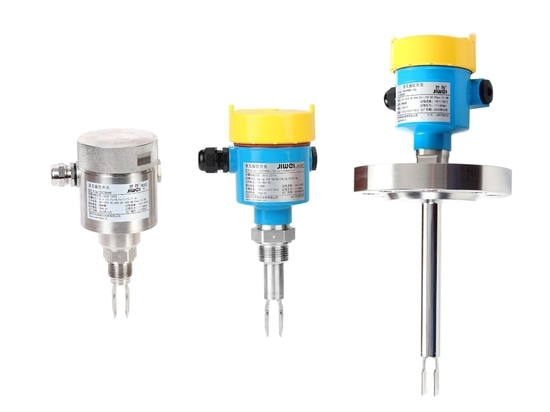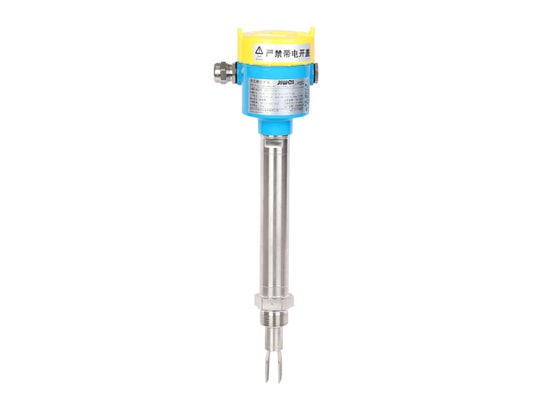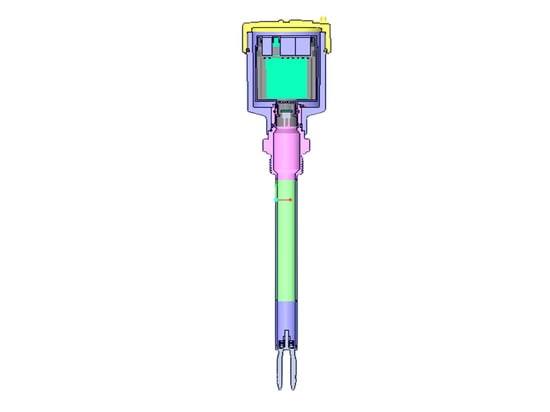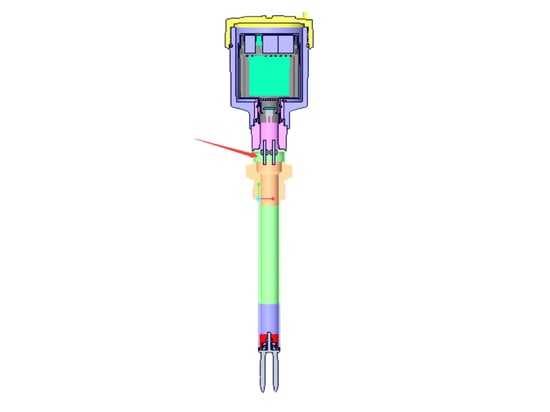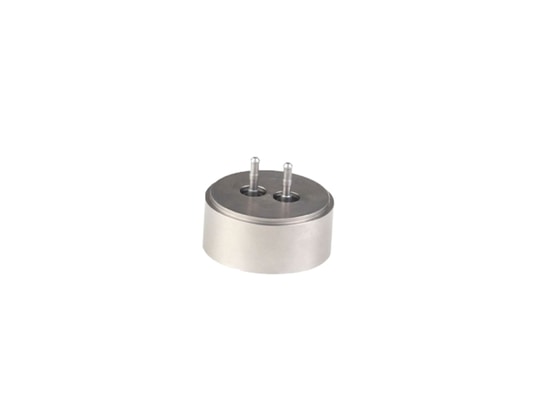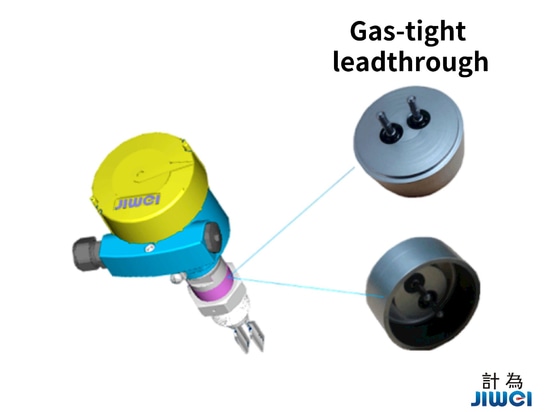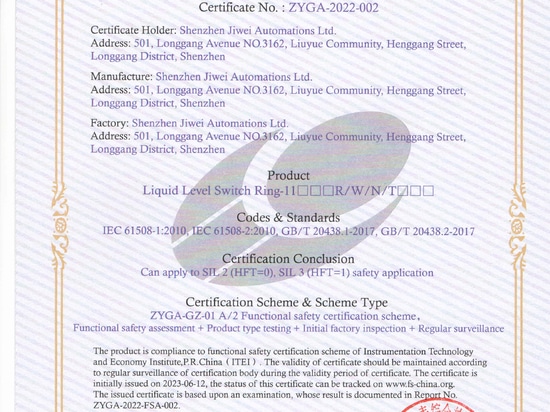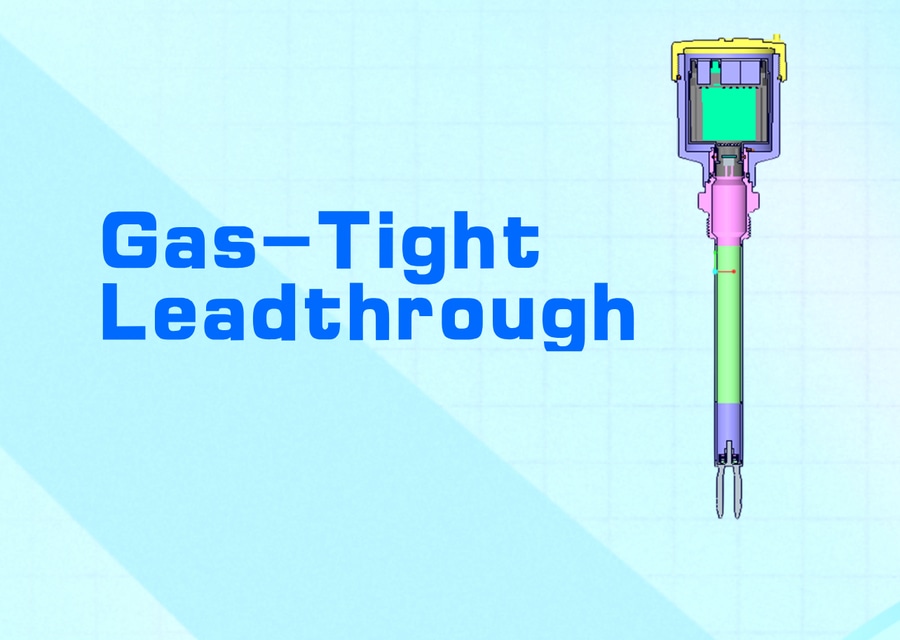
#Product Trends
Functions of Gas-Tight Leadthrough in Fork Liquid Level Switch
Jiwei specially designed a Fork Level Switch with gas-tight leadthrough. This model is an ideal choice for liquid level measurement of flammable, explosive, corrosive, toxic liquids, as well as for the high-pressure tanks.
Fork Liquid Level Switches are widely used in the field of liquid level measurement, but in some special hazardous applications, such as flammable, explosive, highly corrosive, toxic media and in high-pressure storage tanks, conventional Fork Liquid Level Switches are improper to use and may lead to potential risks.
The conventional Fork Liquid Level Switches use piezoelectric components to achieve vibration driving and detection of the fork. When the fork comes into contact with liquid, the resonance frequency of the fork body significantly decreases, and the change in vibration frequency is directly reflected in the output signal by the piezoelectric device. The piezoelectric ceramics can only be installed near a boundary membrane at the front end, but the piezoelectric ceramics need to be connected to the electronic module with wires. To leave a space for the wires, a hollow process connection and tube are used, which is called hollow structure. The cross-sectional view is shown in the figure.
The main problem is, the boundary membrane of the wetted part of the fork may be penetrated after corrosion, causing high-pressure medium flow back to the aluminum alloy housing through the corroded membrane, and may lead to potential risk of overflow and uncontrolled leakage.
For such high-risk applications, Jiwei specially designed a Fork Level Switch with gas-tight leadthrough. This model is an ideal choice for liquid level measurement of flammable, explosive, corrosive, toxic liquids, as well as for the high-pressure tanks. So, what are the differences between a Fork Level Switch with gas-tight leadthrough and a conventional Fork Level Switch? What are the functions of gas-tight leadthrough in Fork Level Switch?
The biggest difference is that an additional gas-tight leadthrough is welded above the process connection (under the aluminum-alloy housing of the junction box), which is equipped with a hollow block connection and sealed with glass metal between the housing and the process connection. The gas-tight leadthrough achieves a strong sealing effect through the sintering of borosilicate glass and stainless steel, with the reserving wire connection joints. In the event of accidental corrosion and penetration into the membrane of the fork body under high temperature and high pressure conditions for a long period, the gas-tight leadthrough can prevent liquids from penetrating the housing through the extended tube and process connection, thereby preventing accidents such as high temperature, high pressure and corrosive liquid leakage caused by the housing being apart from the instrument.
The gas-tight leadthrough also plays a moisture-proof role in protecting piezoelectric components in harsh industrial environments and in hazardous areas.
Jiwei is the first forerunner that manufactures the Fork Level Switch with gas-tight leadthrough in China. Our circuit board adopts modular design, and the entire circuit board is installed in a semi cylindrical plastic box. At the same time, sealing glue is injected to prevent electronic spares from oxidizing, as well as featuring waterproof, anti-corrosion, insulated, flame retardant performance, and improving the anti-seismic function. With the long-lasting potted electronics, Ring-11 Fork Level Switches perform critical operations across diverse industrial and chemical applications.
For measuring highly corrosive liquids with Jiwei Ring-11 Fork Level Switch, anti-corrosion coatings such as PFA and ECTFE can be selected based on the characteristics of the medium, or materials such as Hastelloy can be applied. At the same time, Ring-11 adopts a high-temperature resistant design, with a maximum temperature of 250 ℃. Ring-11 is qualified with Explosion-proof and Intrinsic Safety Certifications, CE and SIL2/3 Qualifications, all certifications can be checked in formal national institutions and national official websites.
